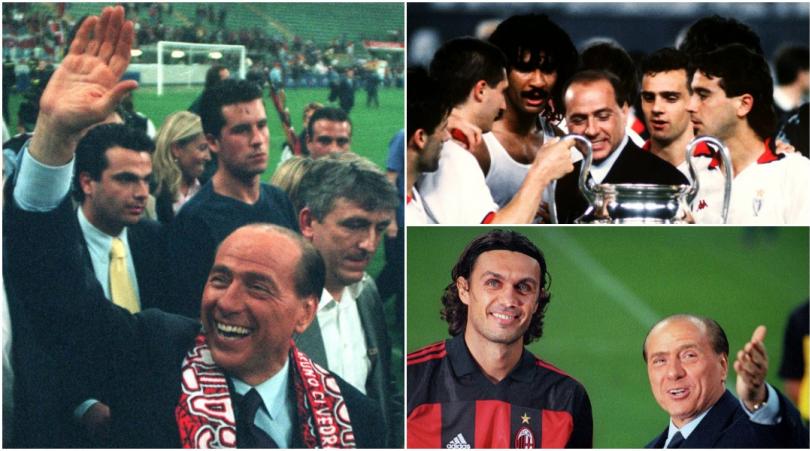How YouTube changed football: the seismic shift of a global phenomenon
In only a decade, the video-sharing service has turned supporters into experts, players into memes and tricksters into stars. FFT investigates why...
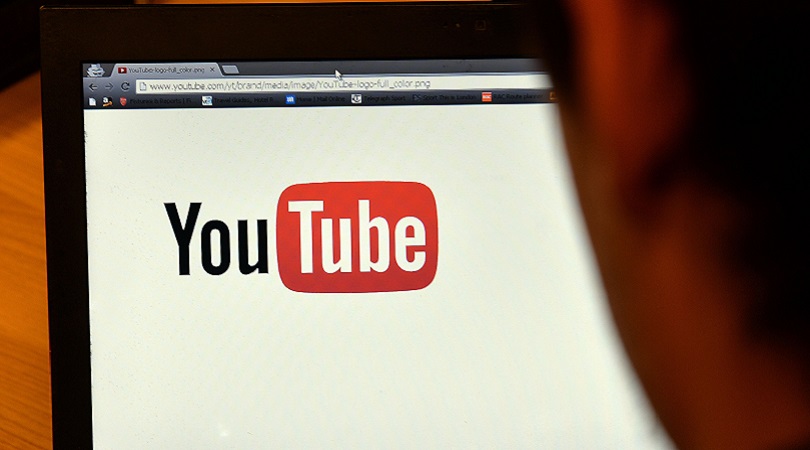
This article originally appeared in the January 2017 issue of FourFourTwo. Subscribe!
Ronaldinho was a fraud.
Nike’s 2005 advert for their Tiempo Legend boots, during which the nonchalant Brazil star repeatedly pings a football back off the crossbar from 20 yards without it touching terra firma, had become the biggest video on YouTube. Yet here was a Nike spokesman admitting, “The shots against the crossbar have been reworked and refined on the computer.” Supposedly two of Ronny’s four strikes did hit the bar (which you’d think would be enough), but it didn’t matter. The video was fake.
Nike had accomplished their mission, however. Boy, had they. While the footage was a world away from today’s polished, sculpted ads – it was filmed in real time, ended abruptly and had no soundtrack beyond the ball tapping against boots and thunking against woodwork – it was the first YouTube video of any kind to reach one million views.
And this was only YouTube’s beta site. Indeed, it took a good three weeks for Ronaldinho and Nike’s combined trickery to rack up a million clicks; by way of contrast, last year’s trailer for Star Wars: The Force Awakens amassed 112 million views in its first 24 hours. An advert for a football boot had shown what this new, obscure website could achieve.
A few weeks after Nike’s ‘Touch of Gold’ video had hit seven figures, and 11 years ago this month, YouTube was officially launched, before being bought by Google in 2006. The internet wouldn’t be the same again… and neither would football.
Slow start
Even the use of licensed match footage wasn’t considered a threat, despite the revolutionary accessibility of YouTube’s free streaming service
Nobody in football took YouTube seriously in its early days, and it’s easy to see why. Just as YouTube itself had, like Facebook, begun life as a ‘hot or not’ rating/dating site – because everything on the internet eventually comes back to sex – the first football videos being shared were too trivial to upset the sport’s movers and shakers.
Get FourFourTwo Newsletter
The best features, fun and footballing quizzes, straight to your inbox every week.
Even the use of licensed match footage wasn’t considered a threat, despite the revolutionary accessibility of YouTube’s free streaming service in a world where videos were expensive to host, hard to find and risky to download.
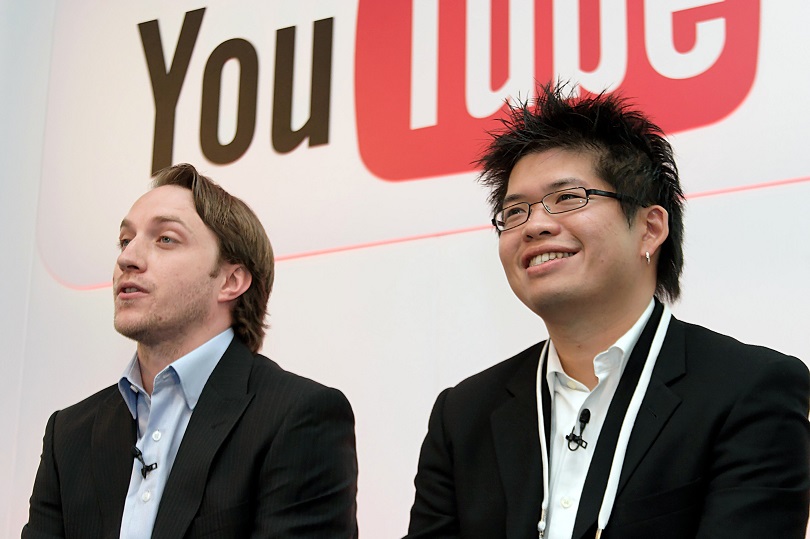
The most popular early football videos included the four-second ‘Neil Lennon heinously headbutts Alan Shearer’s foot’ and the four-minute ‘The ultimate Zidane HeadButt video’. The latter was uploaded just a few days after Zinedine Zidane nutted Marco Materazzi in the 2006 World Cup final, compiling 42 comedy GIFs that mashed up Zidane’s Glasgow kiss with Pokemon, Street Fighter and even MC Hammer. It wasn’t that original, most of the clips having been liberated from an online community called YTMND (‘You’re The Man Now, Dog’), yet it drew millions of views.
Still, the whole world had already seen Zidane and Materazzi’s special moment; a comic mash-up going viral wouldn’t change much. This was nothing like the cataclysmic effect that YouTube had on the career of Tom Cruise, whose reputation never recovered from online memes mocking his infamous couch jump on Oprah not long after the site’s launch, nor the career of Howard Dean, whose widely-shared yelp in an Iowa caucus speech – ‘The Dean Scream’ – turned him from democratic presidential candidate to an international laughing stock. Football fans were yet to harness YouTube’s potential, while the sport’s higher-ups just didn’t really care.
Highlight reels, usually accompanied by either DMX or some ear-assaulting Europop, showed them the best of what they could expect to see from an exotic new signing
YouTube was, though, instilling football supporters with an intangible power of sorts. With match action being shared by like-minded people across every continent, showing everything from the season review of a club in the English third tier to Jonathan Blondel’s highlights package, fans became more well-informed. Highlight reels, usually accompanied by either DMX or some ear-assaulting Europop, showed them the best of what they could expect to see from an exotic new signing.
Users created ‘welcome’ videos, even if they didn’t support the club that was doing the welcoming. In the summer of 2006, when YouTube was still in its infancy, Carlos Tevez joined West Ham from Corinthians and a clip reel that same day drew more than 100,000 views; the account’s only other video garnered 68. Portsmouth fans had to settle for a slideshow of incoming pretty boy Niko Kranjcar, which ticked a different set of boxes entirely.
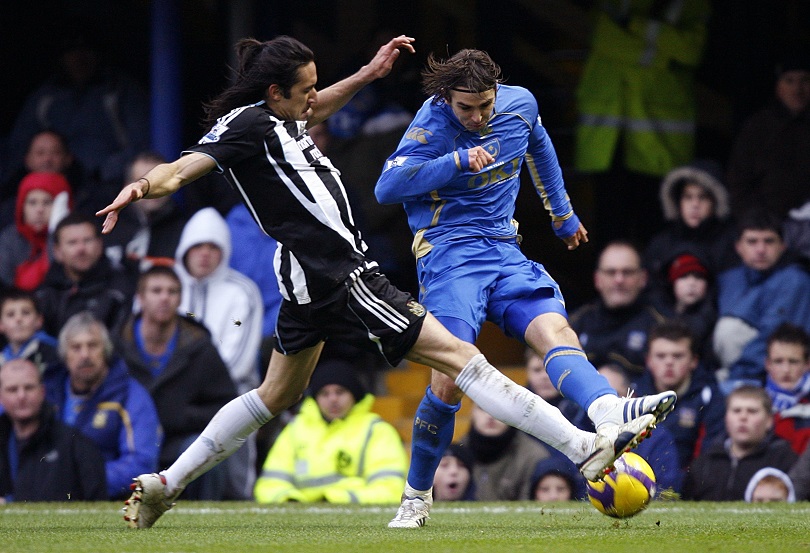
This knowledge was superficial, of course. If it’s true that in 2017 we’re living in a ‘post-fact society’, then football fans on YouTube were years ahead of their time. Any player could be and still is reduced to clips of regal brilliance or rank incompetence, made to suit a narrative. The truth is what you and YouTube want it to be. And for the ever-growing proportion of supporters who enjoy discussing football more than watching it, the proliferation of condensed match highlights provides bitesize chunks for easy digestion.
Still, the professionals wouldn’t get involved with all this nonsense. Or at least, they shouldn’t have done.
Tale of two clubs
Keegan resigned from his post in protest and was later awarded £2 million by the arbitration panel, Wise was sacked and Newcastle were relegated
Back in August 2008, Newcastle’s manager was Kevin Keegan and their director of football was Dennis Wise, as baffling a concept then as it is now. When Wise advised the club to sign Uruguay midfielder Ignacio Gonzalez, Keegan said he wasn’t good enough.
As an arbitration panel reviewing Keegan’s subsequent exit would later attest, “Wise then told him that the player was on YouTube, and that Keegan could look him up on there, but he found that the clips were of poor quality and provided no proper basis for bringing a player to a Premier League club. Moreover, no one at the club had ever seen him play.”
Newcastle signed Gonzalez anyway, and the fallout was quite something. Keegan resigned from his post in protest and was later awarded £2 million by the arbitration panel, Wise was sacked and Newcastle were relegated at the end of the season. No wonder those in the game eyed YouTube with suspicion.
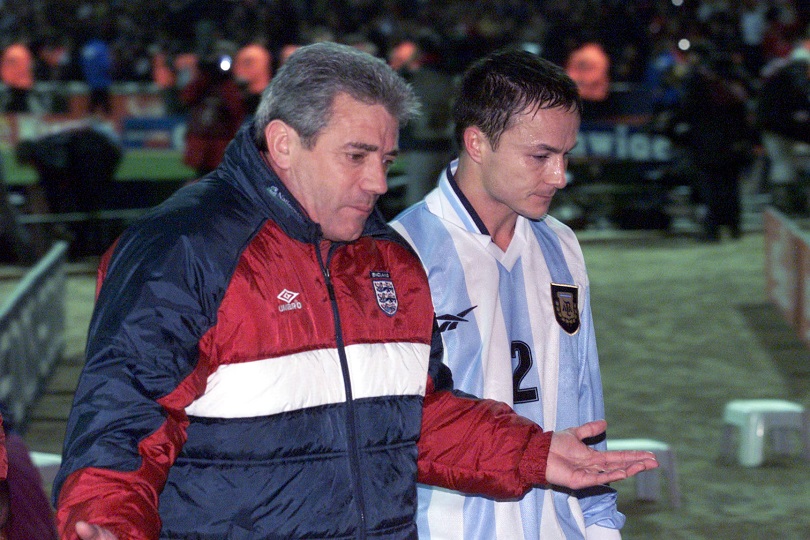
Football clubs are more, well, wise about YouTube now – in more ways than one. Newly wary of its pitfalls, they nonetheless embrace the medium rather than fear it. Manchester City led the way.
“When I came here in 2009 the club had just made the even bigger decision to go free on their website,” Michael Russell, Head of CityTV, explains to FFT. “Every other football club in the land had its TV content behind a paywall.
“If you’re free, you might as well go where the bigger audience is: YouTube. Of course, the club had never been on television, and it’s a very difficult decision for a club to go digital if you have got a TV channel that employs 50-plus members of staff. However, in terms of growing audience, there's no better place than YouTube. City fans come to ManCity.com, but the world is on YouTube.”
Teenager Kieran ‘Kez’ Brown represents Man City officially by participating in FIFA tournaments and then posting YouTube videos
And not just the footballing world, either. Manchester City were among the pioneers in realising that a vibrant and inclusive channel could attract young internet users who weren’t even into football.
“The Harlem Shake is the club’s most-viewed video,” says Russell, who can be seen dancing in the video while dressed as a baby (obviously). “We were the first Premier League club to do the Harlem Shake, and it showed just how on-trend we were. YouTube is all about tempo, and we pride ourselves on jumping on current trends.”
City are far from reactive, though. As well as being the first English club to make their videos free, they were the second to sign up an eSports player: teenager Kieran ‘Kez’ Brown represents the club officially by participating in FIFA tournaments and then posting YouTube videos. City don’t rely on Sergio Aguero and chums to draw people into their world. An April Fool’s prank called The World’s Worst Referee featured zero first-teamers yet racked up more than two and a half million views.
City were early adopters of Tunnel Cam, too. “It was only going to be a three-minute video,” Russell recalls. “But when I filmed 17 minutes and watched it back, I said, ‘I am not getting rid of any of that – it’s all fascinating.’ At that time, you didn’t know what tunnels are like. Now all the broadcasters film in there. I’d like to think we had an impact on that.”
BT Sport, a subscription service, drew a record number of viewers for last season’s Champions League and Europa League finals by showing them for free on YouTube
The result is that Manchester City have the third-highest number of YouTube subscribers of any sporting franchise in the world, trailing only to the La Liga behemoths Real Madrid and Barcelona. YouTube assists in the club’s rapid growth across the globe.
And it isn’t just clubs that are turning to YouTube. Some of the world’s biggest football matches and even tournaments have been streamed there – not by a dodgy network riddled with pop-ups and abusive commenters, but through official channels. The Copa America has been broadcasting every match live on YouTube since as early as 2011. BT Sport, a subscription service, drew a record number of viewers for last season’s Champions League and Europa League finals by showing them for free on YouTube, despite having paid a whopping £897m for the two competitions’ broadcast rights. With traditional television ratings for live football suffering across the board, this may become a growing trend.
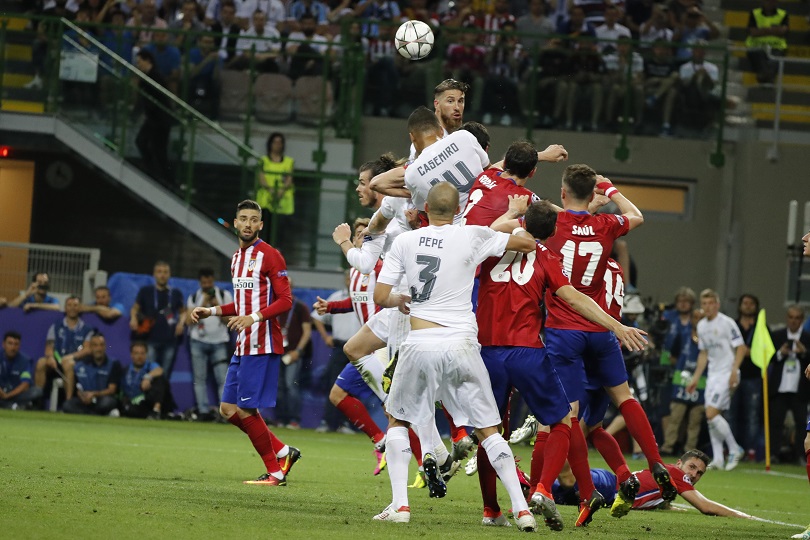
But what of the fans, who began football’s entry into YouTube? Some would argue that they are the jesters now. The inexorable rise of ‘fan TV’, led by the unofficial channels for Manchester United and Arsenal and later piggybacked by many more, has seen an increasing number of enraged, incandescent match-goers spit vitriol into a camera after their team’s 0-0 draw, to the amusement of viewers at home. “When you boil it down,” wrote Jonathan Liew in TheTelegraph two years ago, “the YouTube fan phenomenon is the world laughing at the working-class football fan. Well done, everyone.”
Very few in football – only Nike, Barcelona, Real Madrid, FIFA and a handful of freestylers (more on them later) – have a bigger following than Copa90
There is, however, some good news for genuine football supporters. One of YouTube’s most popular sporting channels is Copa90, which brands itself as ‘by fans, for fans’. Very few in football – only Nike, Barcelona, Real Madrid, FIFA and a handful of freestylers (more on them later) – have a bigger following than a group dedicated to the fan experience, and they hold no little influence.
“No one gave us a chance,” says CEO Tom Thirlwall, who co-created Copa90 in 2012. “Everyone said that a football media business without any football rights or recognisable football talent on screen was emphatically not going to work. And in 2012, sport made up less than half a per cent of the content on YouTube, with football a subset of that. But we made it our mission to capture and champion the voice of fans.
“What amazes me today, four and a half years later, is that we will get briefs from some major global brands, leagues and tournaments who want ‘a fans-first approach’. Isn’t it amazing that when players want to play in front of them, clubs want to recruit them and broadcasters want to sell their product to them, the fans have been forgotten? Brands will say, ‘We’ve had three or four agencies working on this for months and here’s our line…’ – and it’s ‘Connect to fans through authentic content that speaks to them.’ Wow. OK. So what have you been doing up to now?”
In creating videos on subjects ranging from the intense rivalry between Red Star and Partizan Belgrade to a Syrian refugee trying to forge a playing career in Germany, Copa90 can tell stories to a large network of fans (one that has been boosted further by popular videos on Lionel Messi and FIFA 17). They’ve managed to establish a connection, something that’s not gone unnoticed by football’s heavyweights.
“We’ve done a lot of work over the past couple of years with Major League Soccer,” Thirlwall tells FFT. “We have had conversations with the FA and the Premier League. Federations have approached us to say, ‘We have a problem connecting with fans and we understand that you have this authentic connection, so we would like you to help us.’ Our ambition is to become an important influence on the game going forward, giving fans a voice and a platform.”
Think on that the next time you’re browsing on YouTube for football’s funniest howlers.
Where next?
Freestylers and clips of professional footballers’ flicks and tricks account for many of YouTube’s most-watched sports channels
In recent years, YouTube has seen the camera turn 180 degrees. Football fans can be minor celebrities, as can people once mocked for uploading videos of goals ‘they’ scored on FIFA or PES (or, inexplicably and inexcusably, Football Manager). Anyone can be a player now.
Football freestylers are self-made celebrities. Blessed with quick feet, confidence and a camera, these skill merchants – many of whom pursued a career in professional football only to find they lacked the requisite physique, drive or broad range of talents – have found a different way to make a living from their ability. Freestylers and clips of professional footballers’ flicks and tricks account for many of YouTube’s most-watched sports channels.
F2Freestylers – arch-ballers Billy Wingrove and Jeremy Lynch – now have nearly five million subscribers. “We try to think of things no one has done before,” Lynch tells FFT. “We’re working through a list of 100 or so, but almost every day we think of a new one.”
Wingrove adds: “We have managed to make our job from another avenue. We’re filming with Barcelona players! Six or seven years ago, it didn’t even exist. We created it, basically.”
YouTube’s impact has been massive. Skilled footballers who don’t make the grade now have another route into the game. And when 17 of YouTube’s 40 most-watched football clips are either freestylers or skills reels, the site could even be affecting how today’s young players play. Will the next generation of footballers be more concerned with fancy flicks than hat-tricks?
If that happens, it would be the most significant case of YouTube changing football, more than a decade after Ronaldinho wowed the world with his crossbar tomfoolery. For now, YouTube’s only impact is in football’s growth, fan culture, celebrity, scouting, education and the way we spectate. And it has every episode of Renford Rejects.
Huw was on the FourFourTwo staff from 2009 to 2015, ultimately as the magazine's Managing Editor, before becoming a freelancer and moving to Wales. As a writer, editor and tragic statto, he still contributes regularly to FFT in print and online, though as a match-going #WalesAway fan, he left a small chunk of his brain on one of many bus journeys across France in 2016.





